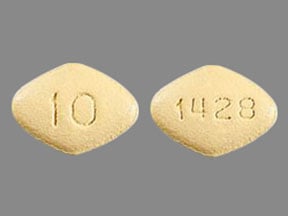
Dapagliflozin Propanediol Coupons & Savings Card – Discount Prices from $328.20
Generic for: Farxiga
My prescription
Edit
10MG, Dapagliflozin Propanediol (30 Tablets)
Select pharmacy

CVS
$328.20
COUPON PRICE
Walgreens
$364.69
COUPON PRICE
Albertsons
$382.58
COUPON PRICE
Walmart
$541.01
COUPON PRICEFree Dapagliflozin Propanediol Savings Card

CVS
$328.20
Show this coupon to your pharmacist
ID
LHB3C62025
PCN
CHIPPO
BIN
019876
GRP
LHX
This coupon is not insurance
Generic for: Farxiga
More prescriptions for kidney disease
More prescriptions for kidney disease
Price history for Farxiga (brand) & Dapagliflozin Propanediol (generic)
30 Tablets, 10MG
Average retail price for Farxiga
Average retail price for Dapagliflozin Propanediol
Average SaveHealth price for Dapagliflozin Propanediol
Our price history data is based on aggregated prescription data collected from participating pharmacies in America. Our prescription data updates daily to reflect the latest price changes. If you notice a missing data point, it means there wasn't sufficient data available to generate a monetary value for that date.
We analyzed Dapagliflozin Propanediol prices for (10MG, 30 Tablets) over the last 12 months. The average retail price was $562.08, while the average price using the SaveHealth discount card was $363.21. That's a savings of approximately 35.38% when using our Dapagliflozin Propanediol coupon.
Compared to the generic version, Farxiga had an average price of $877.68 over the same time period. With the SaveHealth savings card, Dapagliflozin Propanediol is 58.62% cheaper on average than Farxiga.
*Retail prices are based on pharmacy claims data, and may not be accurate when we don't have enough claims.
Dapagliflozin Propanediol dosage forms
Dosage Quantity Price from Per unit 5MG 30 Tablets $328.20 $10.94 5MG 60 Tablets $638.40 $10.64 5MG 90 Tablets $948.60 $10.54 10MG 30 Tablets $328.20 $10.94 10MG 60 Tablets $638.40 $10.64 10MG 90 Tablets $948.60 $10.54
| Dosage | Quantity | Price from | Per unit |
|---|---|---|---|
| 5MG | 30 Tablets | $328.20 | $10.94 |
| 5MG | 60 Tablets | $638.40 | $10.64 |
| 5MG | 90 Tablets | $948.60 | $10.54 |
| 10MG | 30 Tablets | $328.20 | $10.94 |
| 10MG | 60 Tablets | $638.40 | $10.64 |
| 10MG | 90 Tablets | $948.60 | $10.54 |
Dapagliflozin Propanediol Warnings
The following safety information outlines important potential risks associated with the use of Farxiga (dapagliflozin). It's crucial to review these details and discuss any concerns with your healthcare provider.
Ketoacidosis: Farxiga may lead to a severe and life-threatening condition called ketoacidosis, particularly in individuals with diabetes. This occurs when the body produces excess acids known as ketones, resulting in acidic blood. The risk increases if you are ill, consume fewer calories than usual, or have recently reduced your insulin dosage. Conditions that elevate risk include having diabetes, experiencing fever, reduced calorie intake, following a ketogenic diet, dehydration, pancreatic issues, alcohol consumption, altered or missed insulin doses, and undergoing surgery.
Dehydration and Low Blood Pressure: This medication can reduce body fluid levels, leading to dehydration or significantly low blood pressure. Dehydration can impair kidney function due to reduced blood flow. Individuals over 65, those with a history of kidney problems, or those taking loop diuretics (water pills) are at higher risk.
Genital and Urinary Tract Infections: Farxiga increases the likelihood of developing genital infections, such as yeast infections, and urinary tract infections (UTIs). Some infections can become severe and necessitate hospitalization. Seek medical attention if you experience symptoms like fever, painful urination, tenderness, redness, genital itching, or odorous discharge. Treatment may involve antibiotics or antifungal medications. Those with a history of genital yeast infections or UTIs are at increased risk.
Low Blood Sugar (Hypoglycemia): Using Farxiga with other diabetes medications, including insulin or glipizide, can cause dangerously low blood sugar levels. Hypoglycemia can be life-threatening. Risks are heightened by changes in diet and exercise, alcohol consumption, and concurrent use of other diabetes medications.
It is vital to consult with your healthcare provider to understand these risks fully and to manage them effectively.
Dapagliflozin Propanediol Side Effects
Common side effects:
- Frequent urination
- Dizziness
- Sensation of lightheadedness
- Mild infections (vaginal yeast infections, nose and throat infections, urinary tract infections)
Less common but important to monitor:
- Back pain
- Discomfort during urination
- Nausea
- Constipation
- Flu-like symptoms
- Genital yeast infections (in men)
Serious side effects:
- Ketoacidosis (high ketone levels in the blood)
- Severe allergic reactions
- Dehydration leading to kidney damage
- Urinary tract infection
- Kidney problems
Dapagliflozin Propanediol Interactions
Interactions with moderate risk that may require dose adjustment, closer monitoring, or timing changes:
- Beta-blockers (such as metoprolol, Propranolol, and Timolol)
